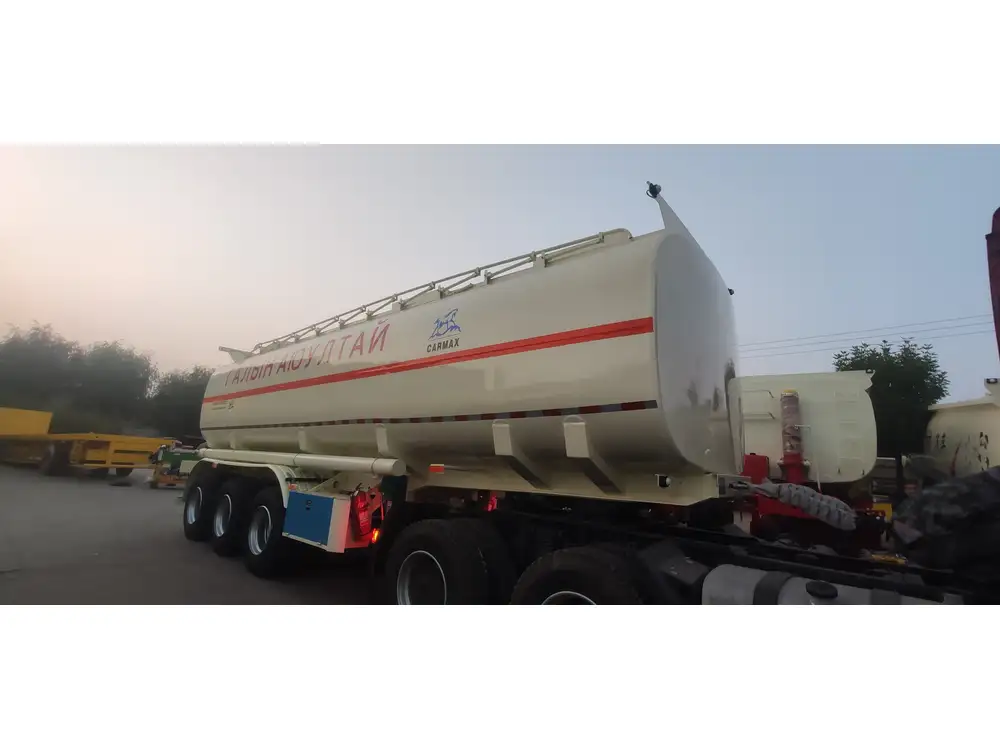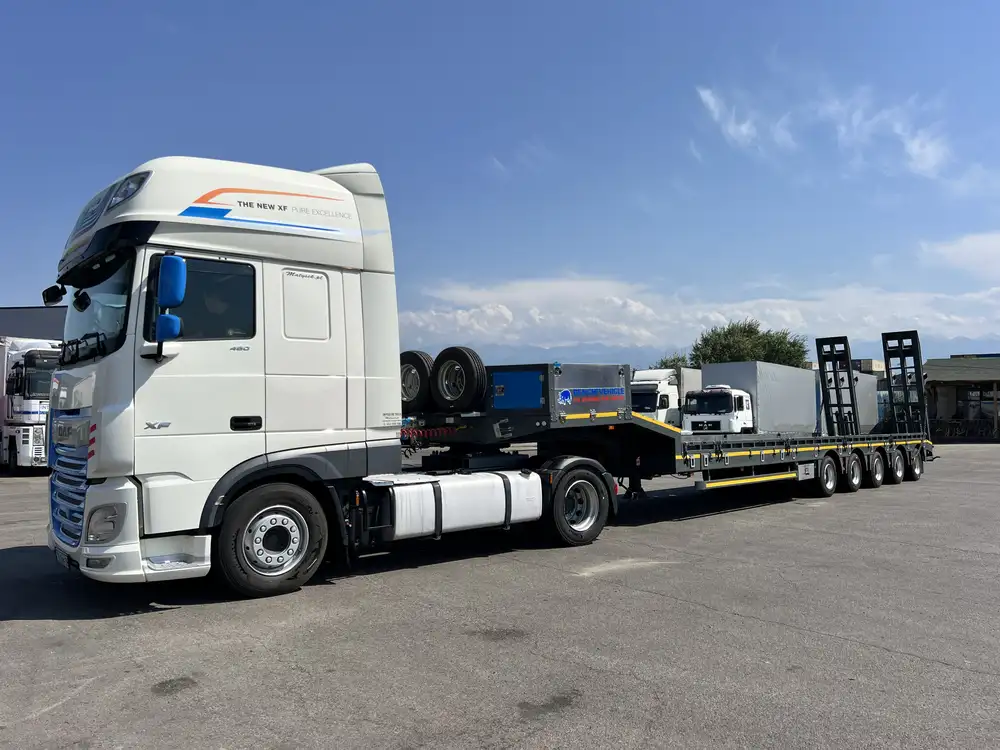Anti-lock Braking Systems (ABS) are pivotal in ensuring the safety and efficiency of semi-trailers. At CarMax Trailer, we recognize the critical role that ABS plays in maintaining vehicle control during braking, especially under challenging conditions. This guide delves deep into the operation of ABS in semi-trailers, exploring its components, functionality, maintenance, and benefits.
Table of Contents
- Introduction to ABS in Semi-Trailers
- Components of ABS Systems
- How ABS Operates in Semi-Trailers
- Benefits of ABS in Semi-Trailers
- Common ABS Issues and Troubleshooting
- Maintenance Tips for ABS Systems
- Future Trends in ABS Technology
- Conclusion
- Frequently Asked Questions
Introduction to ABS in Semi-Trailers
Anti-lock Braking Systems (ABS) have revolutionized vehicle safety by preventing wheel lock-up during braking, thereby maintaining traction with the road surface. In semi-trailers, where heavy loads and extended braking distances are common, ABS is indispensable. It enhances control, reduces stopping distances, and minimizes the risk of accidents.

The Evolution of ABS
Originally developed for passenger cars, ABS technology has been adapted for heavy-duty vehicles like semi-trailers. The evolution from basic braking systems to sophisticated ABS has been driven by the need for increased safety and regulatory compliance in the transportation industry.
Components of ABS Systems
Understanding the components of an ABS system is crucial for comprehending its operation. CarMax Trailer’s ABS systems comprise several key parts:
| Component | Function |
|---|---|
| Wheel Speed Sensors | Detect the speed of each wheel and send data to the ABS control unit. |
| ABS Control Unit | Processes sensor data and determines if wheel lock-up is imminent. |
| Hydraulic Valves | Modulate brake pressure to individual wheels based on control unit signals. |
| Pump | Restores brake pressure after a reduction caused by valve operation. |
| Modulator | Integrates the pump and valves to manage brake pressure dynamically. |
| Electronic Control Module (ECM) | Manages the overall ABS operation and interfaces with vehicle systems. |
Wheel Speed Sensors
Located at each wheel, these sensors continuously monitor rotation speed, providing real-time data to the ABS control unit. They are essential for detecting any discrepancies that indicate potential wheel lock-up.

ABS Control Unit
The brain of the ABS system, the control unit analyzes sensor data to determine if any wheel is decelerating too rapidly. If lock-up is detected, it sends signals to the hydraulic valves to adjust brake pressure accordingly.
Hydraulic Valves and Pump
These components work in tandem to regulate brake pressure. When the control unit signals a wheel is about to lock up, the hydraulic valves reduce braking force on that wheel. The pump then restores appropriate pressure once the risk of lock-up has passed.
How ABS Operates in Semi-Trailers
The operation of ABS in semi-trailers involves a series of coordinated actions designed to prevent wheel lock-up and maintain vehicle stability. Here’s a step-by-step breakdown:
- Brake Application: When the driver applies the brakes, the hydraulic system increases brake pressure to all wheels.
- Wheel Speed Monitoring: Wheel speed sensors continuously monitor the rotation speed of each wheel.
- Detection of Lock-Up Risk: If a sensor detects a wheel slowing down too quickly, indicating a potential lock-up, it sends this information to the ABS control unit.
- Modulation of Brake Pressure: The control unit signals the hydraulic valves to reduce brake pressure on the affected wheel.
- Pulsing Brakes: This reduction is not constant. The system rapidly modulates brake pressure, pulsing it on and off to prevent lock-up while maintaining maximum braking force.
- Restoration of Pressure: Once the wheel regains traction, the pump restores normal brake pressure.
- Continuous Adjustment: This process repeats multiple times per second, ensuring optimal brake performance throughout the braking maneuver.

Diagram: ABS Operation Cycle
flowchart TD
A[Brake Application] --> B[Wheel Speed Sensors Monitor Speed]
B --> C{Is Lock-Up Imminent?}
C -- Yes --> D[Control Unit Signals Hydraulic Valves]
D --> E[Brake Pressure Reduced]
E --> F[Pump Restores Pressure]
F --> B
C -- No --> G[Brake Pressure Maintained]
G --> BBenefits of ABS in Semi-Trailers
The implementation of ABS in semi-trailers offers numerous advantages that enhance both safety and operational efficiency.
Enhanced Safety
ABS significantly reduces the likelihood of wheel lock-up, which can lead to loss of control and accidents. By maintaining traction, ABS ensures that the driver retains steering capability during hard braking.

Reduced Stopping Distances
Under adverse conditions such as wet or icy roads, ABS can shorten stopping distances by preventing skidding. This is particularly crucial for heavy semi-trailers carrying substantial loads.
Improved Vehicle Control
ABS provides better stability during braking, allowing drivers to navigate curves and bends more safely. This control is vital for long-haul trucks that often operate in varying terrains and weather conditions.
Lower Maintenance Costs
By preventing wheel lock-up, ABS reduces wear and tear on braking components. This translates to lower maintenance costs and longer lifespan for brake systems.

Compliance with Regulations
Many regions mandate the use of ABS in commercial vehicles. Adhering to these regulations not only ensures legal compliance but also enhances the reputation of transport companies committed to safety.
Common ABS Issues and Troubleshooting
Despite their reliability, ABS systems can encounter issues. Identifying and resolving these problems promptly is essential for maintaining optimal performance.
Common Issues
- Faulty Wheel Speed Sensors: Damaged or dirty sensors can send incorrect data, leading to ABS malfunction.
- Worn Hydraulic Components: Valves and pumps can wear out over time, affecting brake pressure modulation.
- Electrical Problems: Issues with wiring or the control unit can disrupt communication within the ABS system.
- Low Brake Fluid Levels: Insufficient brake fluid can hinder ABS functionality.
- ABS Warning Light: An illuminated ABS warning light indicates a system fault that requires attention.

Troubleshooting Steps
| Problem | Possible Cause | Solution |
|---|---|---|
| ABS Warning Light On | Sensor malfunction, low brake fluid | Inspect sensors, check and refill brake fluid. |
| Wheel Lock-Up During Braking | Faulty ABS system | Diagnose ABS components, replace as needed. |
| No ABS Response | Electrical failure, control unit issue | Check electrical connections, repair or replace control unit. |
| Unusual Noises | Worn hydraulic valves or pump | Inspect and replace faulty hydraulic components. |
Preventive Measures
- Regular Inspections: Periodically check wheel speed sensors and brake fluid levels.
- Cleaning Sensors: Keep wheel speed sensors free from dirt and debris to ensure accurate readings.
- Routine Maintenance: Follow the manufacturer’s maintenance schedule for hydraulic components and the ABS control unit.
Maintenance Tips for ABS Systems
Proper maintenance of ABS systems is crucial for ensuring their longevity and reliability. Here are some best practices recommended by CarMax Trailer:

Regular Diagnostics
Utilize diagnostic tools to monitor the ABS system’s performance. Regular scans can detect faults early, preventing more severe issues down the line.
Brake Fluid Management
Maintain appropriate brake fluid levels and replace the fluid as per the manufacturer’s guidelines. Contaminated or degraded brake fluid can impair ABS functionality.
Inspecting Electrical Connections
Ensure that all wiring and connectors related to the ABS system are secure and free from corrosion. Faulty connections can disrupt communication between components.

Component Replacement
Timely replacement of worn or damaged components, such as wheel speed sensors and hydraulic valves, is essential. This proactive approach minimizes downtime and maintains system integrity.
Professional Servicing
Engage certified technicians for ABS system servicing. Their expertise ensures that maintenance tasks are performed accurately and efficiently.
Future Trends in ABS Technology
The ABS landscape is continually evolving, with advancements aimed at enhancing performance and integrating with other vehicle systems.

Integration with Electronic Stability Control (ESC)
Future ABS systems are expected to work in tandem with ESC, providing even greater control and stability during extreme driving conditions.
Advanced Sensor Technologies
The development of more precise and reliable sensors will improve ABS responsiveness and accuracy, further reducing the risk of wheel lock-up.
Predictive Maintenance
Leveraging data analytics and IoT, predictive maintenance models will anticipate ABS component failures before they occur, enhancing system reliability.

Enhanced Communication Systems
Integrating ABS with vehicle-to-everything (V2X) communication systems will enable better coordination with other vehicles and infrastructure, improving overall traffic safety.
Lightweight Materials
Innovations in material science will lead to lighter ABS components, reducing the overall weight of semi-trailers and improving fuel efficiency.
Conclusion
At CarMax Trailer, we understand that the ABS system is a cornerstone of semi-trailer safety and performance. By comprehensively understanding its operation, components, and maintenance requirements, transport operators can ensure their fleets remain safe, efficient, and compliant with industry standards. Investing in high-quality ABS systems not only protects valuable cargo but also safeguards lives on the road.

Frequently Asked Questions
1. How often should ABS components be inspected?
Regular inspections are recommended every 6 months or 60,000 miles, whichever comes first. However, more frequent checks may be necessary in harsh operating conditions.
2. Can I drive my semi-trailer if the ABS warning light is on?
While the vehicle may still be operable, it’s crucial to have the ABS system inspected by a professional as soon as possible to ensure safe braking performance.

3. What causes the ABS warning light to illuminate?
Common causes include faulty wheel speed sensors, low brake fluid levels, issues with the ABS control unit, or damaged hydraulic components.
4. Does ABS improve fuel efficiency in semi-trailers?
While ABS primarily enhances safety, it can contribute to better fuel efficiency by reducing unnecessary brake wear and promoting smoother driving patterns.
5. Is ABS mandatory for all semi-trailers?
Regulations vary by region, but many jurisdictions require commercial vehicles, including semi-trailers, to be equipped with functioning ABS systems to comply with safety standards.



